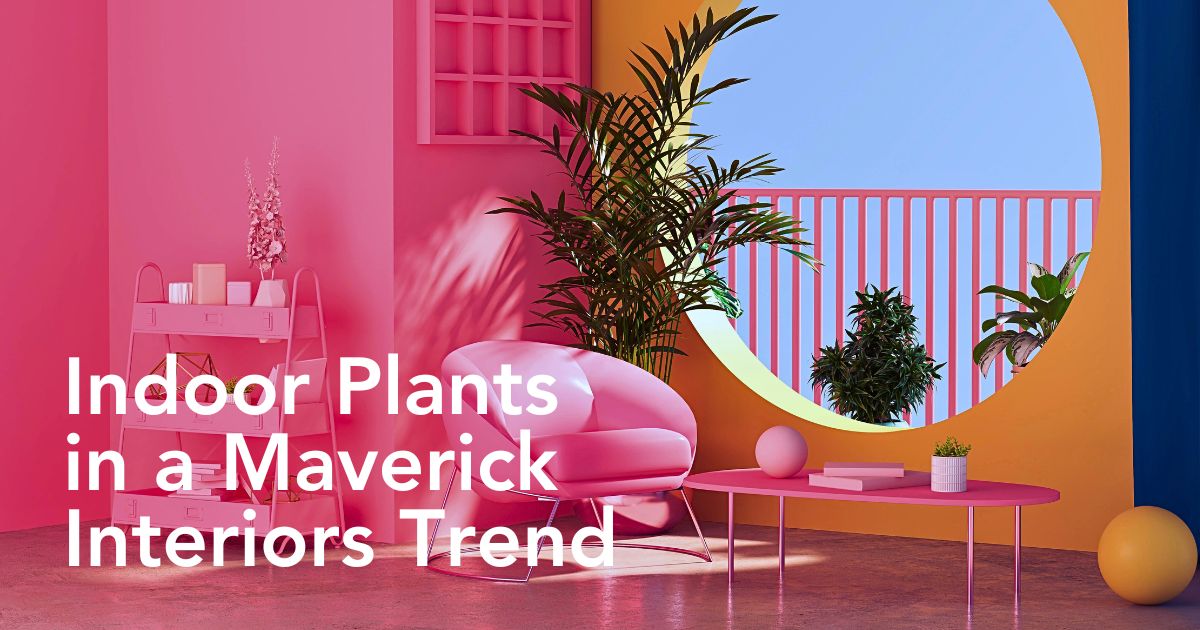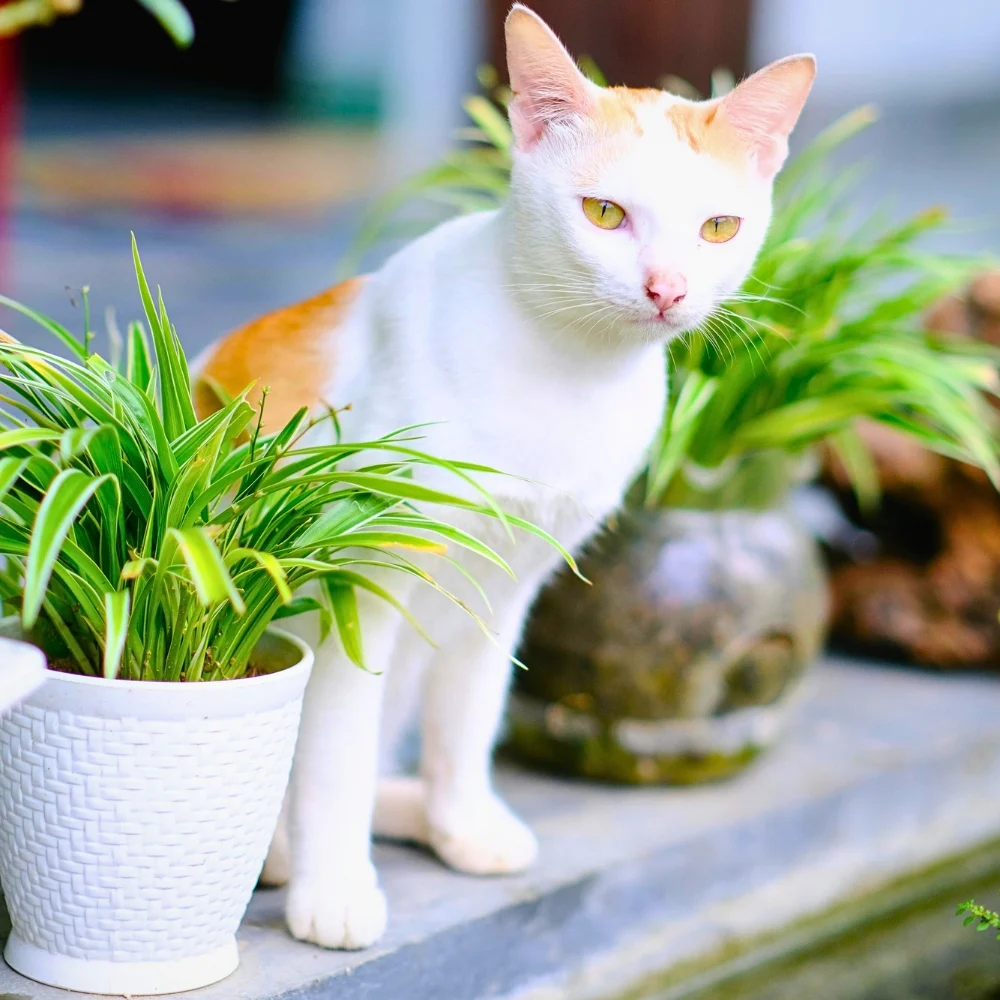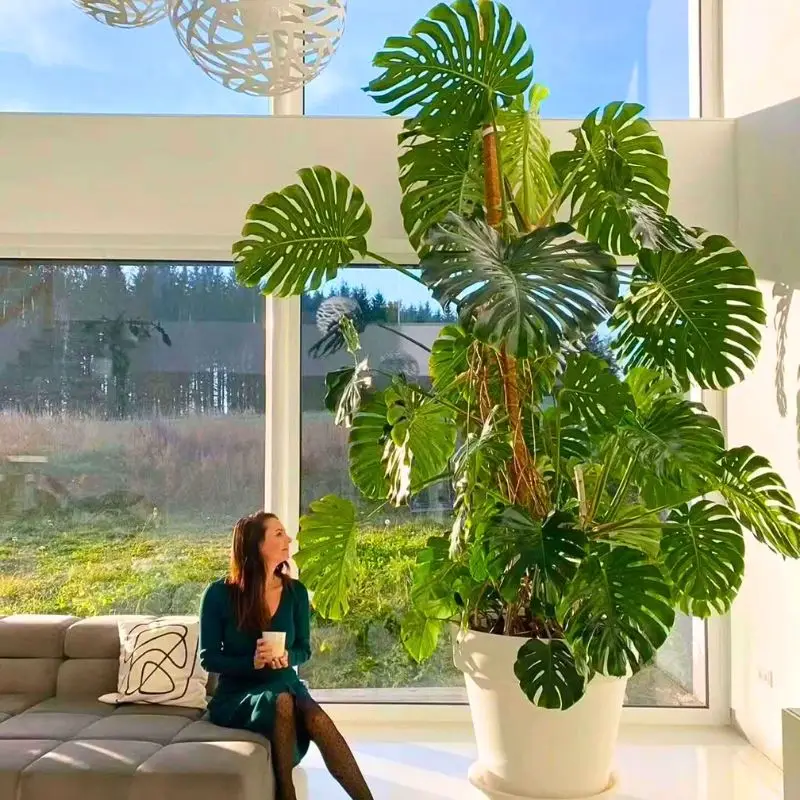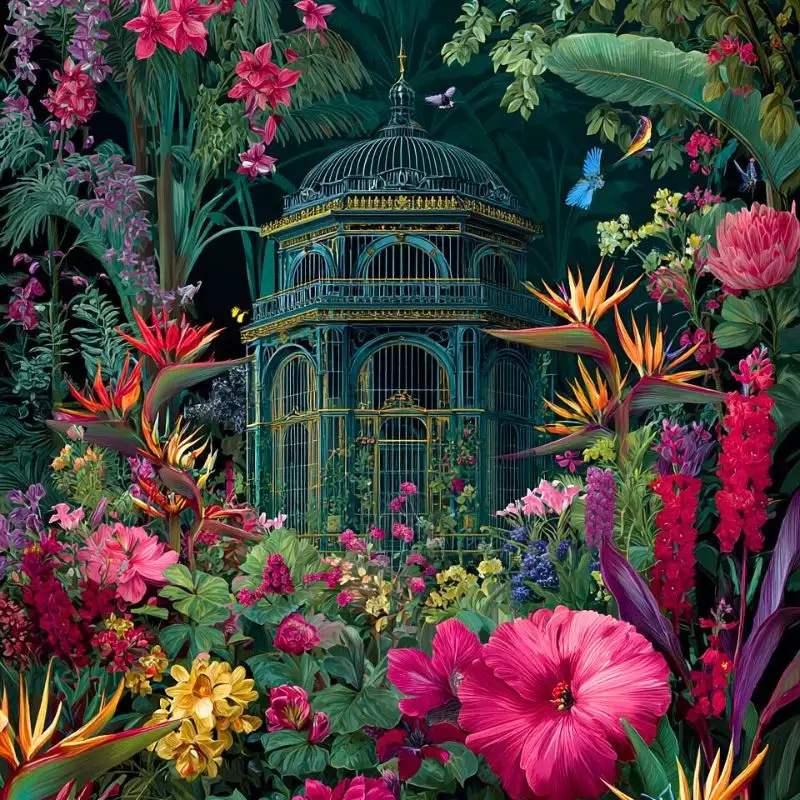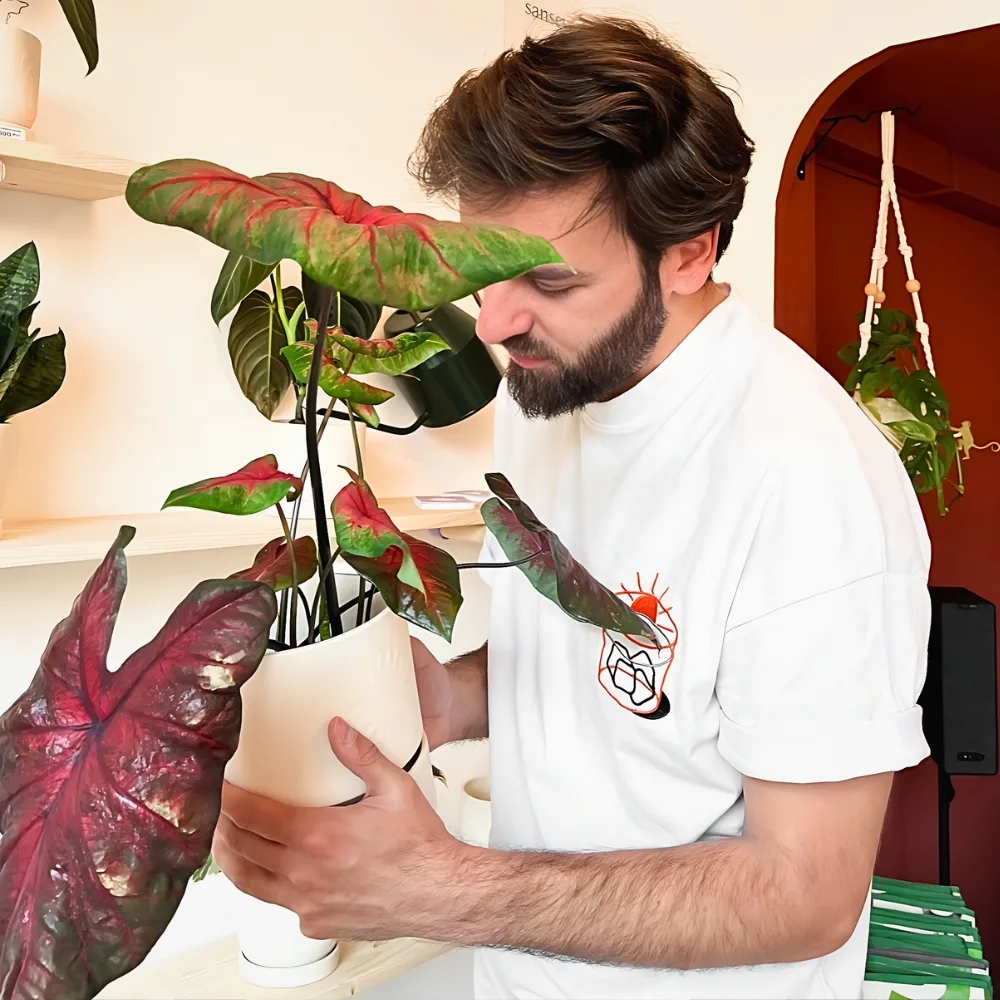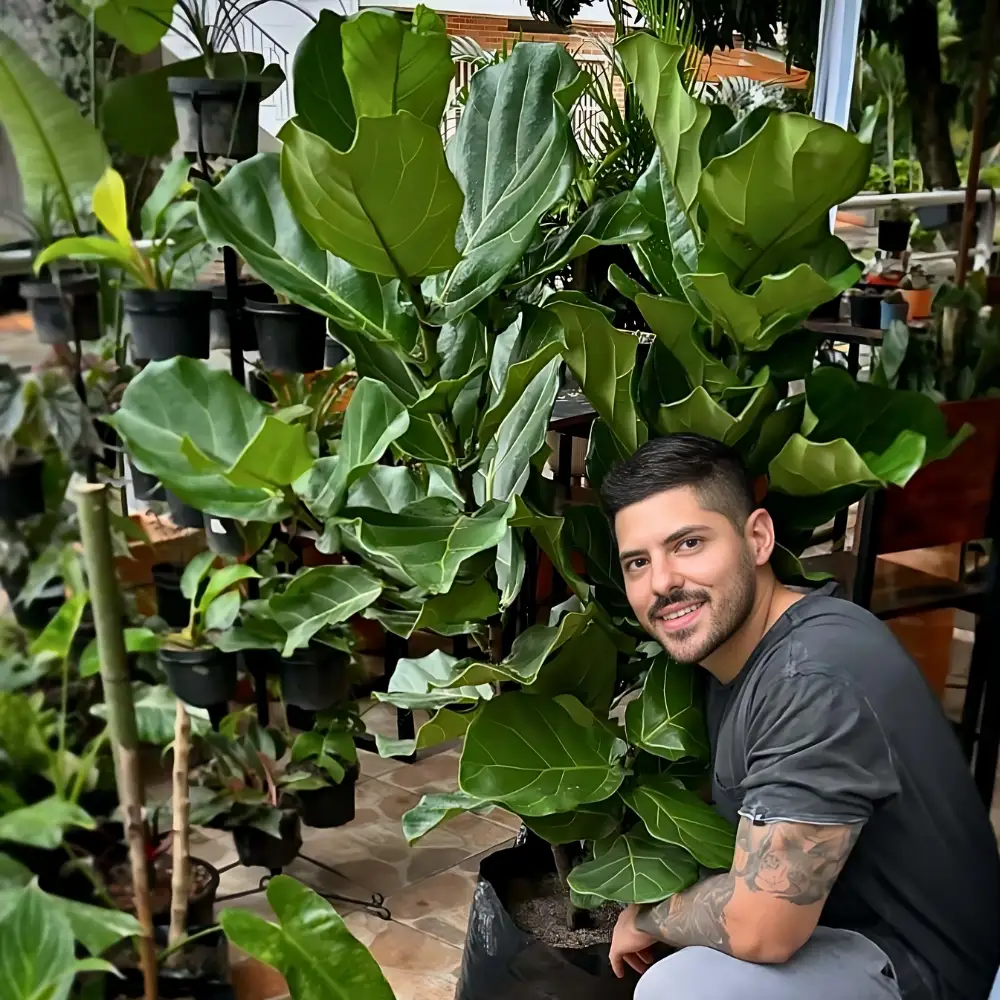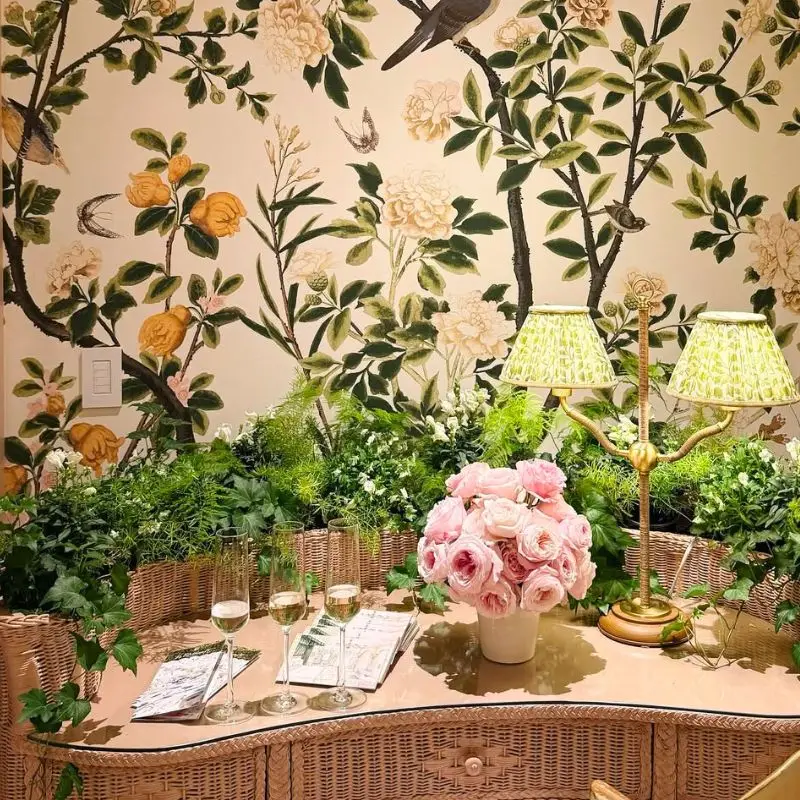In interior design, the postmodern design concept offers a fun, bold, and creative approach to styling your home. A departure from traditional design philosophies, postmodernism adopts a playful, eye-catching aesthetic that embraces and celebrates individuality and diversity. The postmodern approach has, basically, carved out a distinguishing niche, blending the unconventional with the familiar.
One element that has become increasingly integral to this design strategy is the strategic incorporation of houseplants. In fact, what is the other better way to bring life, color, and an aesthetic influence into a design concept than with houseplants? From decorating with plants to choosing the right vessels, there are numerous ways to make houseplants the star elements in the postmodern design.
Postmodern Design, a Rebellion Against the Norm
The postmodern interior design approach emerged in the latter half of the 20th century as a reaction against minimalist, modern design aesthetics.
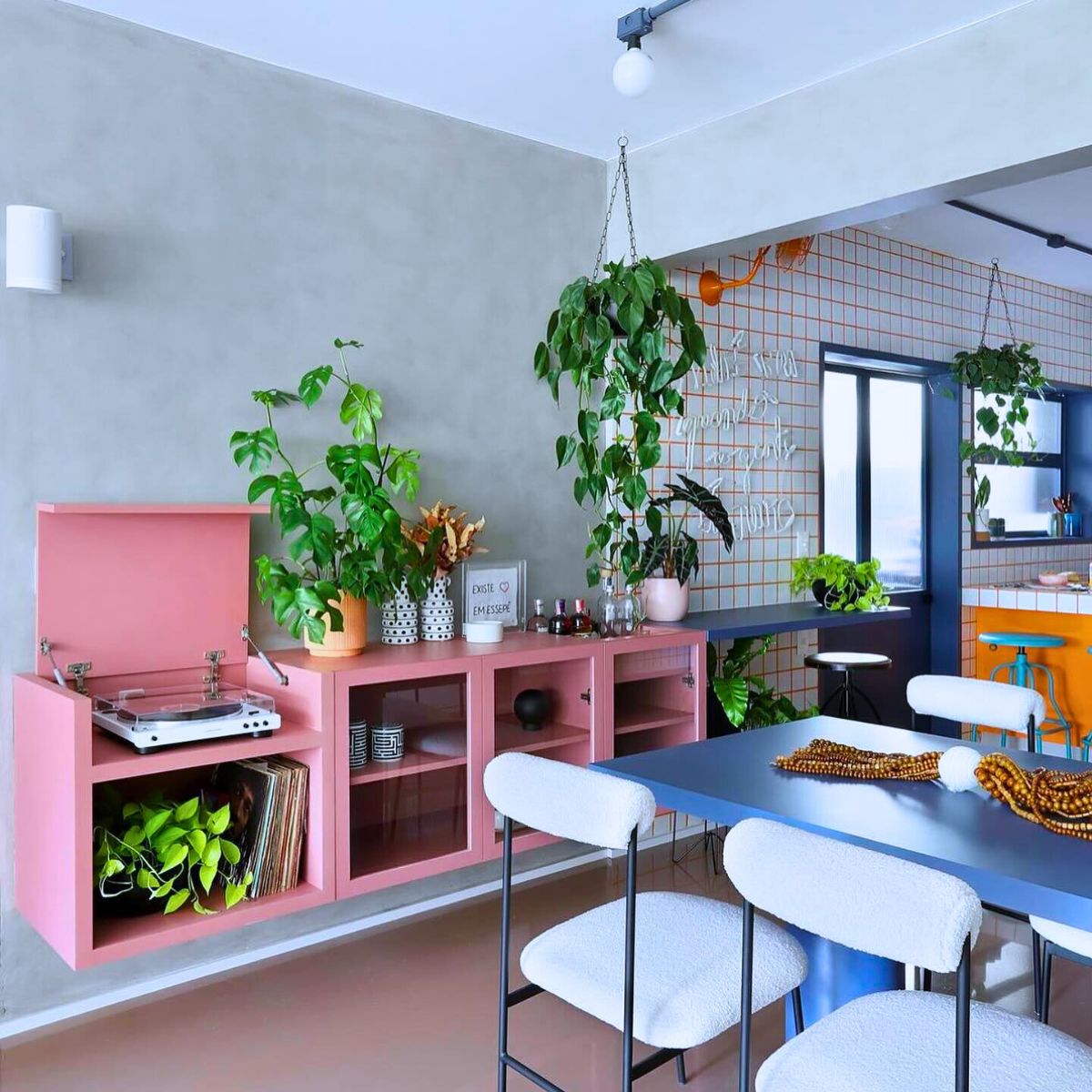
Photo by @your_colourful_home
While modernism prioritizes function rather than form, postmodernism embraces the strange, the unconventional, and the unexpected. Focusing on bold designs, bright colors, and vibrant statement pieces, this style is all about challenging the norms and expressing individuality. As a parent, you could think of it as being architecture's rebellious teenager; one who is playful, a little bit punk, a free spirit, and unafraid to break the rules!
Borrowing from the past but never adhering strictly to any one historical style, postmodernism is a fun mix of eclecticism, geometric shapes, playful furniture designs, bold colors, patterns, textures, and artwork that come together in a harmonious yet unexpected agreement.
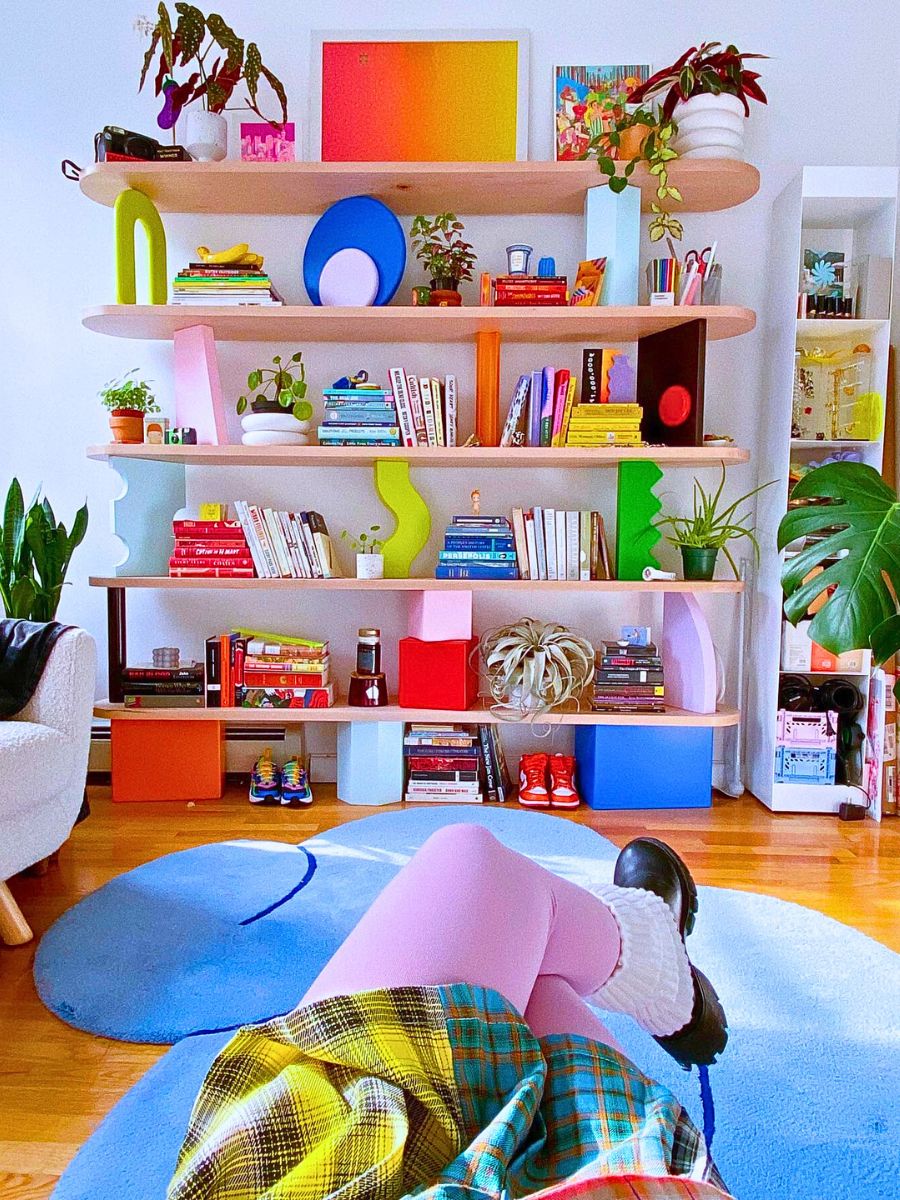
Photo by @yulingwu
A defining characteristic of postmodern design is, essentially, its rejection of the notion of a singular, universal truth. Instead, it celebrates the coexistence of multiple perspectives and interpretations. This manifests in the deliberate clashing of styles, the incorporation of ironic or self-referential elements, and a general disregard of traditional design orders.
Postmodern interiors often feature bold, eclectic furniture and decor that may seem incongruous at first glance. Sleek, angular forms might be paired with ornate and vintage pieces to create a dynamic tension that prompts one to engage with the space more actively and reflectively.
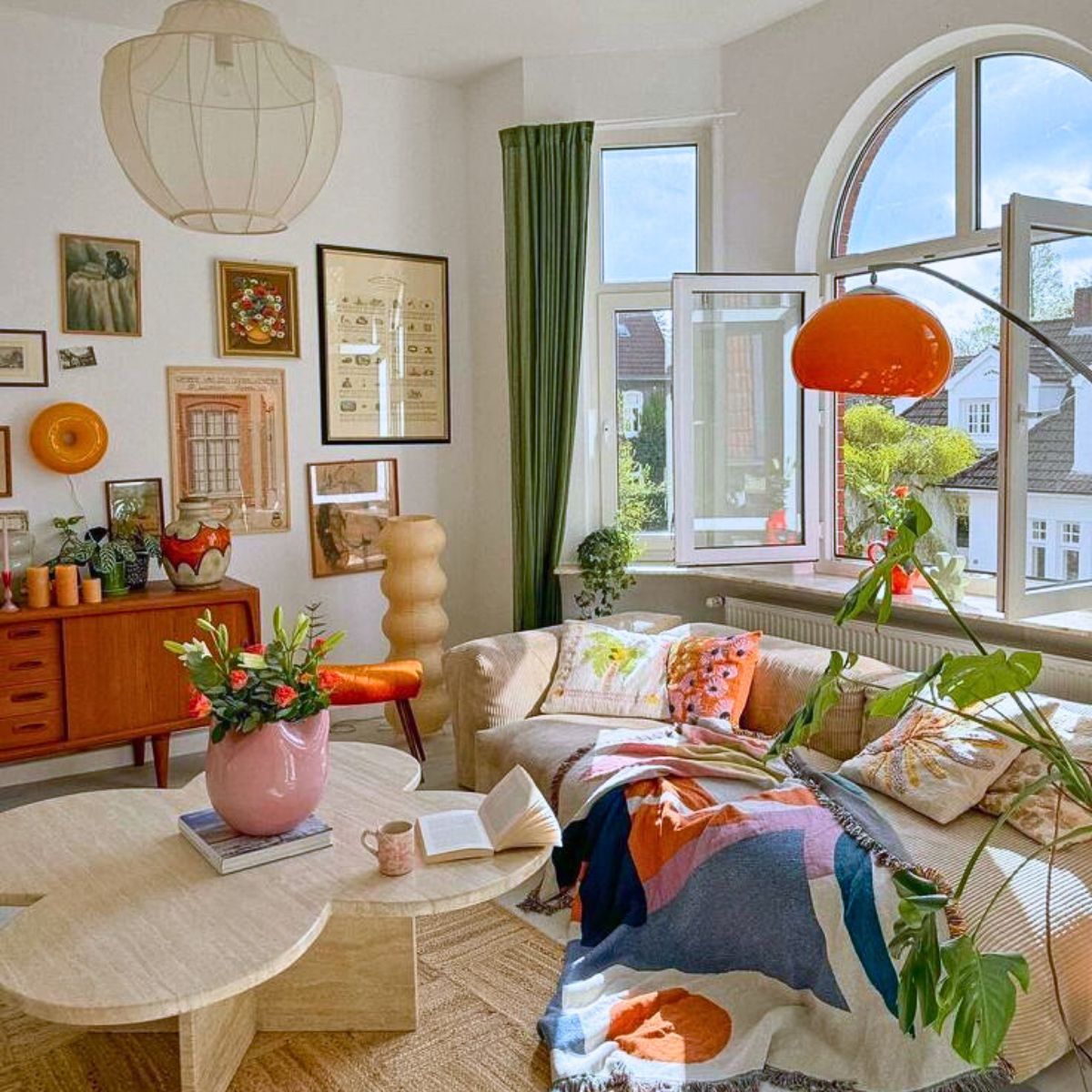
In the same context, infusing natural plants and greenery into postmodern spaces guarantees that the environments are as visually striking as they are imbued with a sense of nature and refreshing vitality.
Bring on the Plants, Infuse Nature Into Interior Design
Now that we've established the rebellious, fun, and vibrant essence of postmodernism, it's time to integrate some houseplants. After all, with their lush greenery, various shapes and sizes, and scents, plants are, in quintessence, the statement pieces needed to bring this design to life.
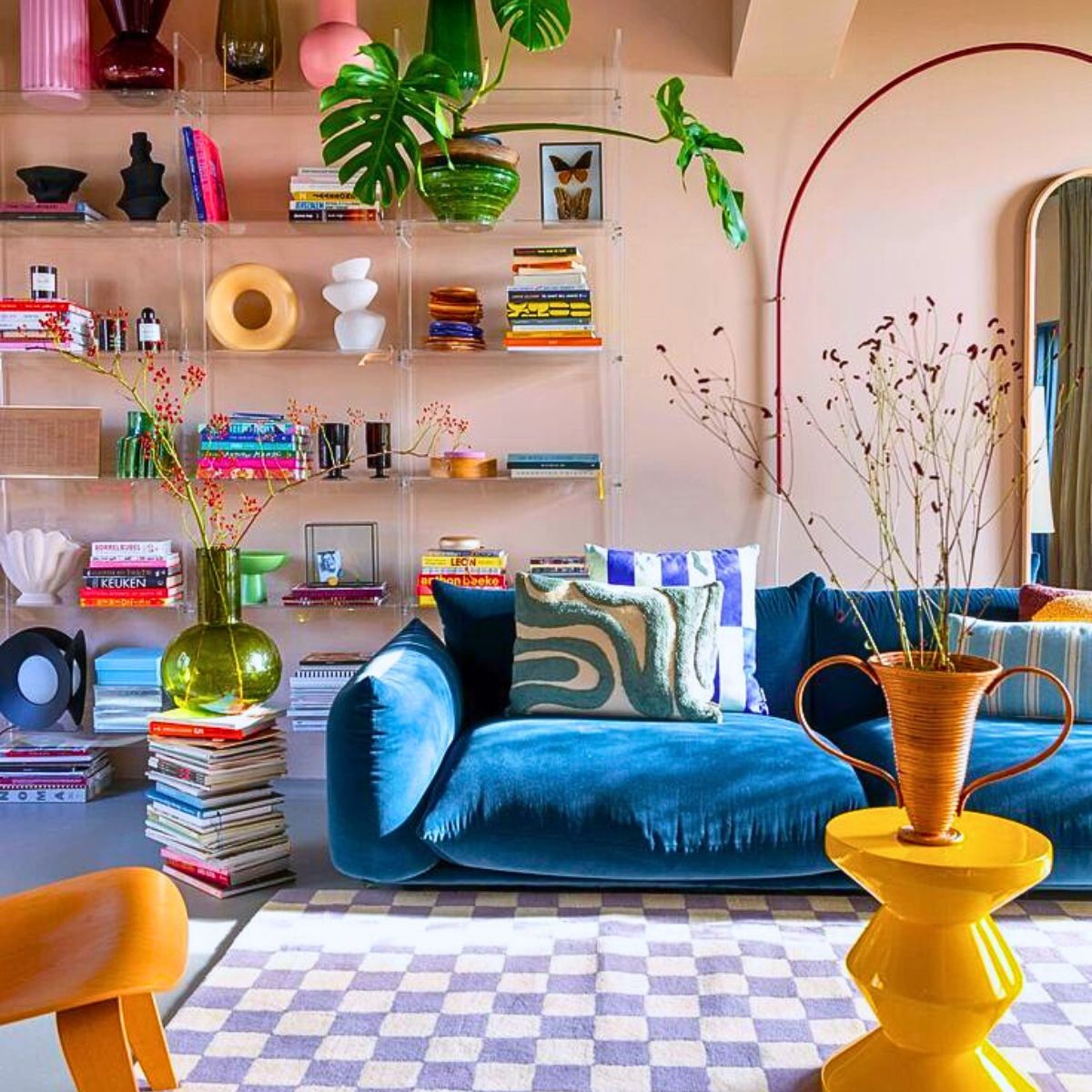
Decorating with houseplants is more than just placing a potted plant on a table; it's about curating a unique space that enhances the atmosphere and reflects one’s personality. Different plants suit different rooms, so be sure to consider the purpose of the space and the amount of natural light it receives.
Paying attention to the plant's care needs, select species that complement the room's purpose and decor. Choose plants that thrive in specific environments to ensure the design has a lasting appeal.
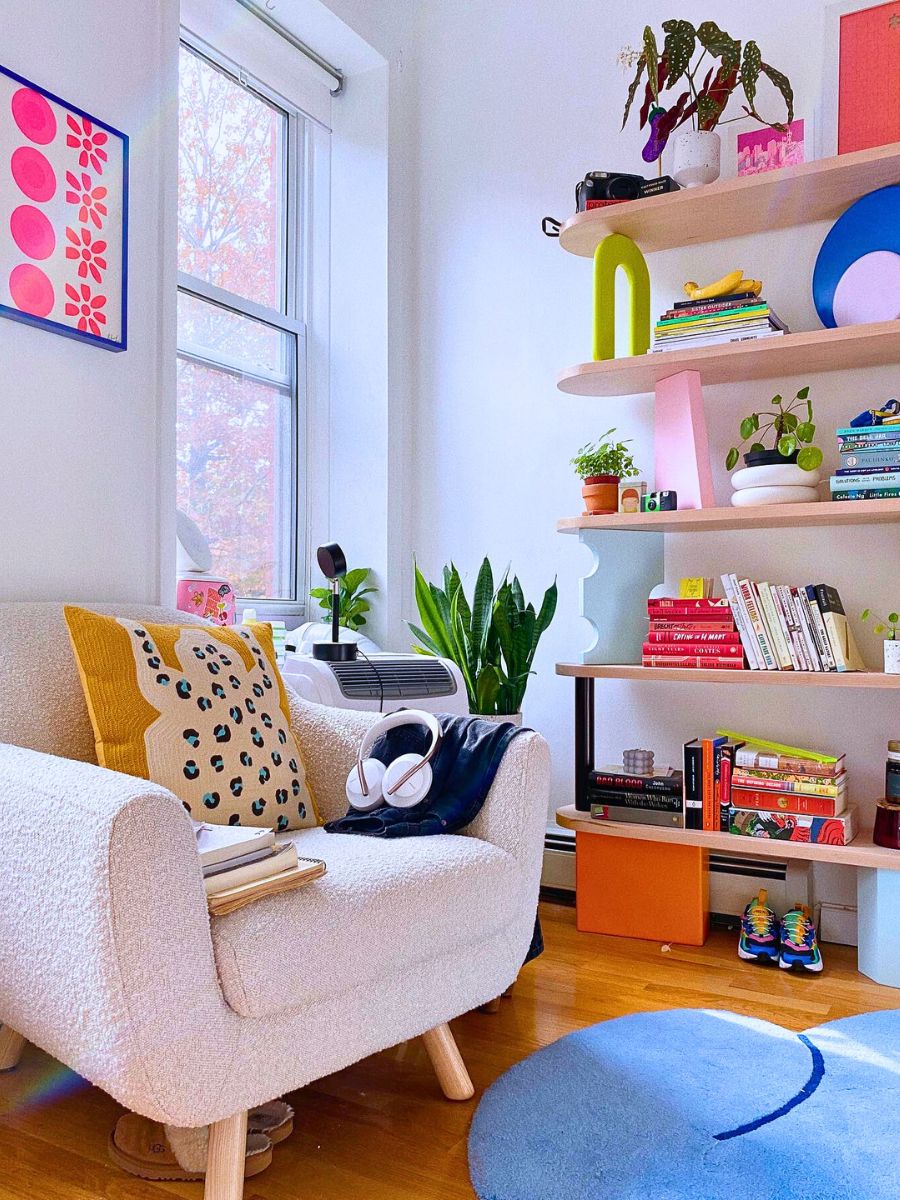
Houseplants as a Postmodern Design Element
The introduction of houseplants into postmodern interiors injects a refreshing, natural element that both complements and contrasts with the surrounding design elements. Their organic forms and delightful hues, act as a counterpoint to the bold, unexpected juxtapositions that are hallmarks of postmodern design.
Placing lush, verdant foliage and greeneries within these spaces, interior designers can create a sense of balance and harmony, softening the sometimes-jarring aesthetic while still maintaining the underlying postmodern ethos.
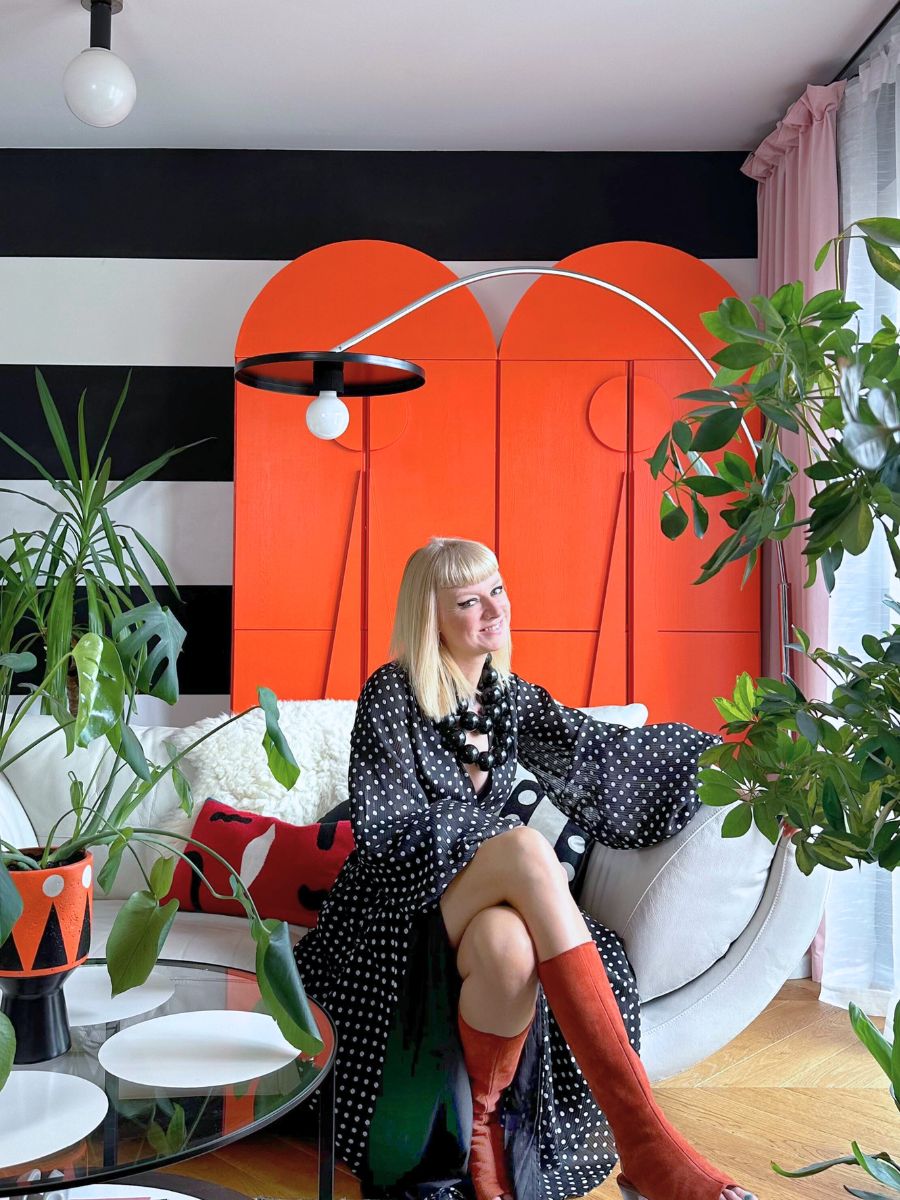
Moreover, the versatility of houseplants allows them to be integrated seamlessly into a wide range of postmodern design styles. From the understated elegance of Scandinavian-influenced postmodernism to the maximalist, eclectic exuberance of a Memphis-inspired interior, houseplants can be employed to great effect. They act as a unifying element that ties the other disparate design elements together.
Embracing the Postmodern Approach With Houseplants
To illustrate the power of houseplants in a postmodern setting, here are a few real-world examples.
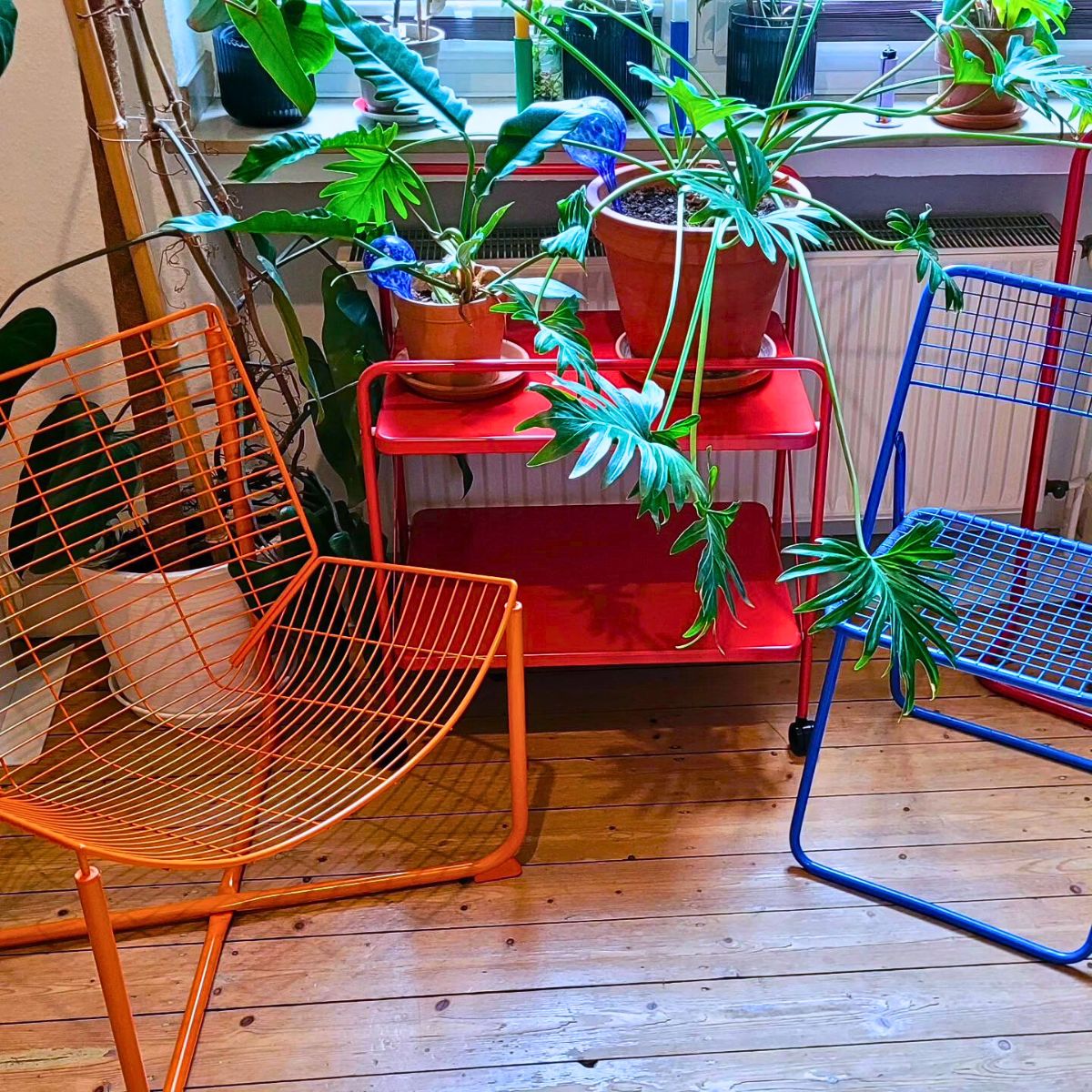
Eclectic Postmodern Loft
In this loft apartment, the interior designer embraces a bold, eclectic postmodern aesthetic, blending vintage and contemporary design elements. A towering fiddle-leaf fig tree, for instance, could stand as the centerpiece of the living room, its striking, geometric foliage complementing the features of the modernist furniture.
The plant's verdant presence, alongside those of other ideal houseplants, softens the harsh edges of, perhaps, exposed brick walls and industrial-inspired shelving units. This creates quite a harmonious blend and juxtaposition of natural and man-made elements in the space.
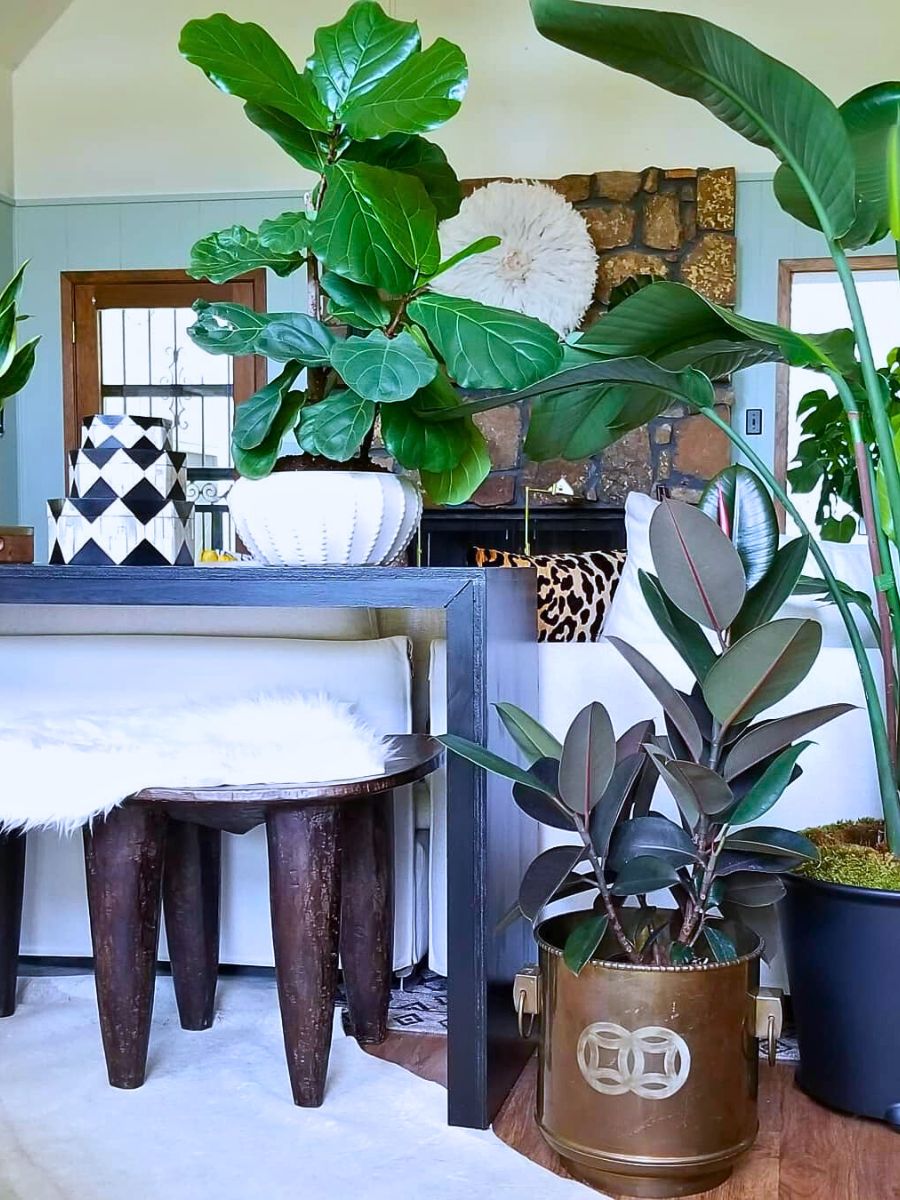
Photo by @carmeonhamilton
Scandinavian-Inspired Postmodern Townhouse
This Scandinavian-influenced postmodern townhouse could feature a minimalist, light-filled interior with clean lines and a muted color palette. However, the designer may incorporate a diverse array of houseplants, including potted palms, trailing vines, and leafy succulents, to infuse the space with a refreshing, organic touch.
The plants' varying shapes, textures, and shades of green add depth and visual interest to the otherwise pared-back design, creating a serene, yet inviting atmosphere.
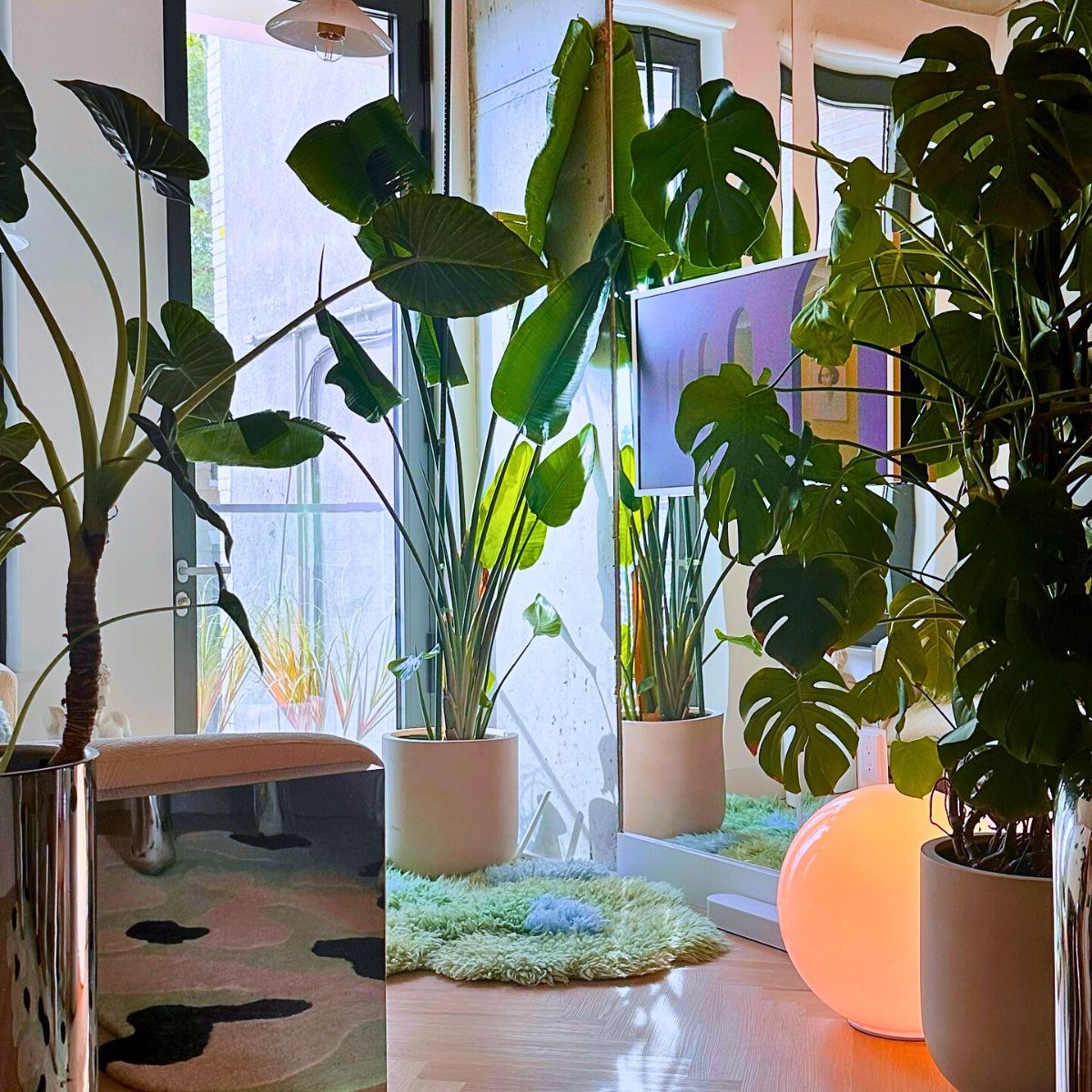
Photo by @mikeihuang
Memphis-Inspired Postmodern Apartment
In this vibrant, Memphis-inspired apartment, a homeowner embraces a maximalist postmodern aesthetic, featuring bold colors, playful patterns, and unexpected design elements. Interspersed throughout the space are lush, verdant houseplants that serve to anchor the eclectic composition.
A cluster of potted philodendrons, for instance, softens the graphic, geometric lines of a custom-designed coffee table, while a trailing pothos plant cascades from a brightly colored, angular wall-mounted planter, creating a visually pleasant focal point.
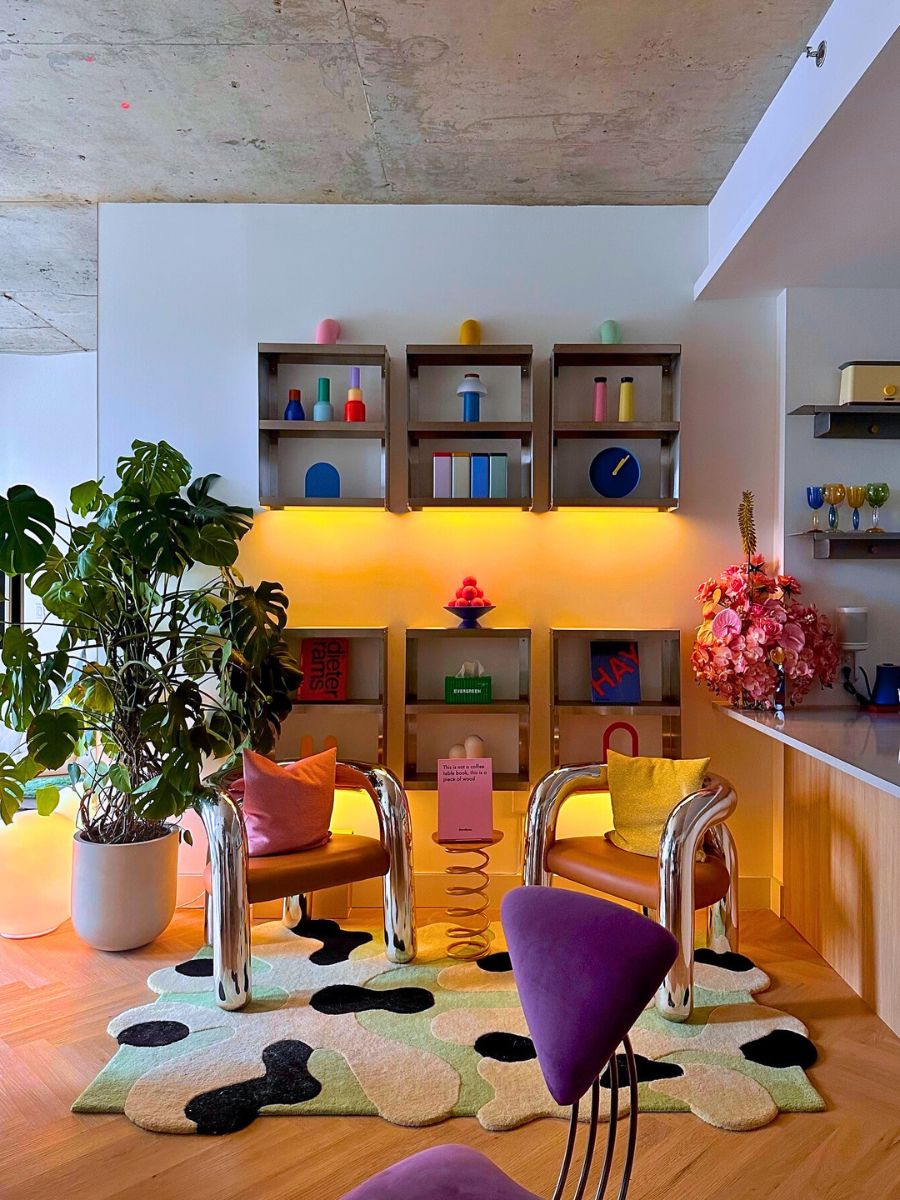
Such cases illustrate how the strategic placement and selection of houseplants can elevate and enhance the postmodern design approach, creating spaces that are both visually captivating and infused with a refreshing, natural essence.
Houseplant Placement Strategies That Bring the Postmodern Vision to Life
Embracing the postmodern design philosophy and incorporating houseplants into the equation can result in truly unique and charming interior environments. One can do this through a few strategies.
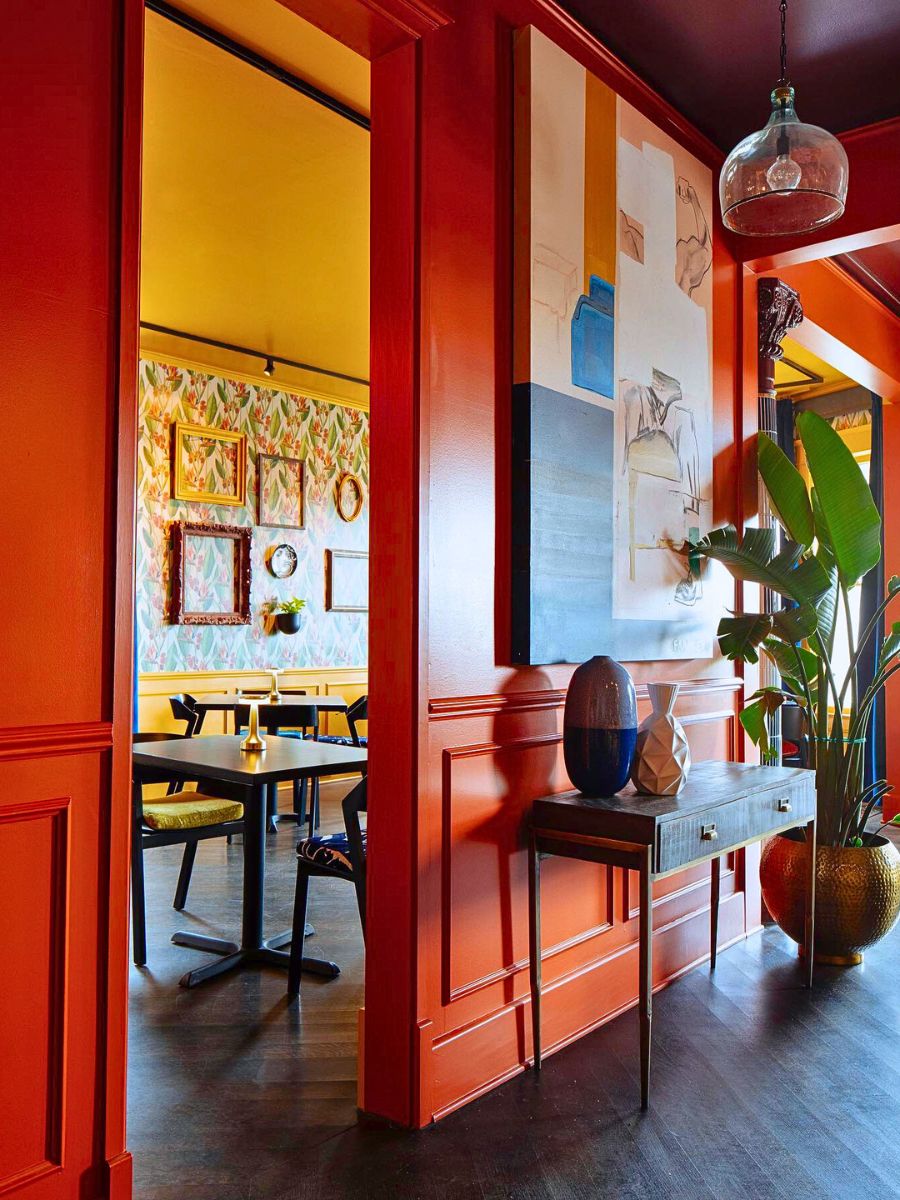
Shelves and Partitioning
Shelves are a great way to display a variety of plants and create a botanical theme that enhances the room's design. Go for a mix of cascading plants, like ferns, trailing vines, and statement species to add dimension and visual interest.
Partitioning with plants, especially those with sculptural, organic forms, is a fantastic way to soften the strong architectural lines of contemporary partition shelves. Layering plants at different heights, placed on stands or hung as wall decorations, will, also, create a jungle-like ambiance in any room.
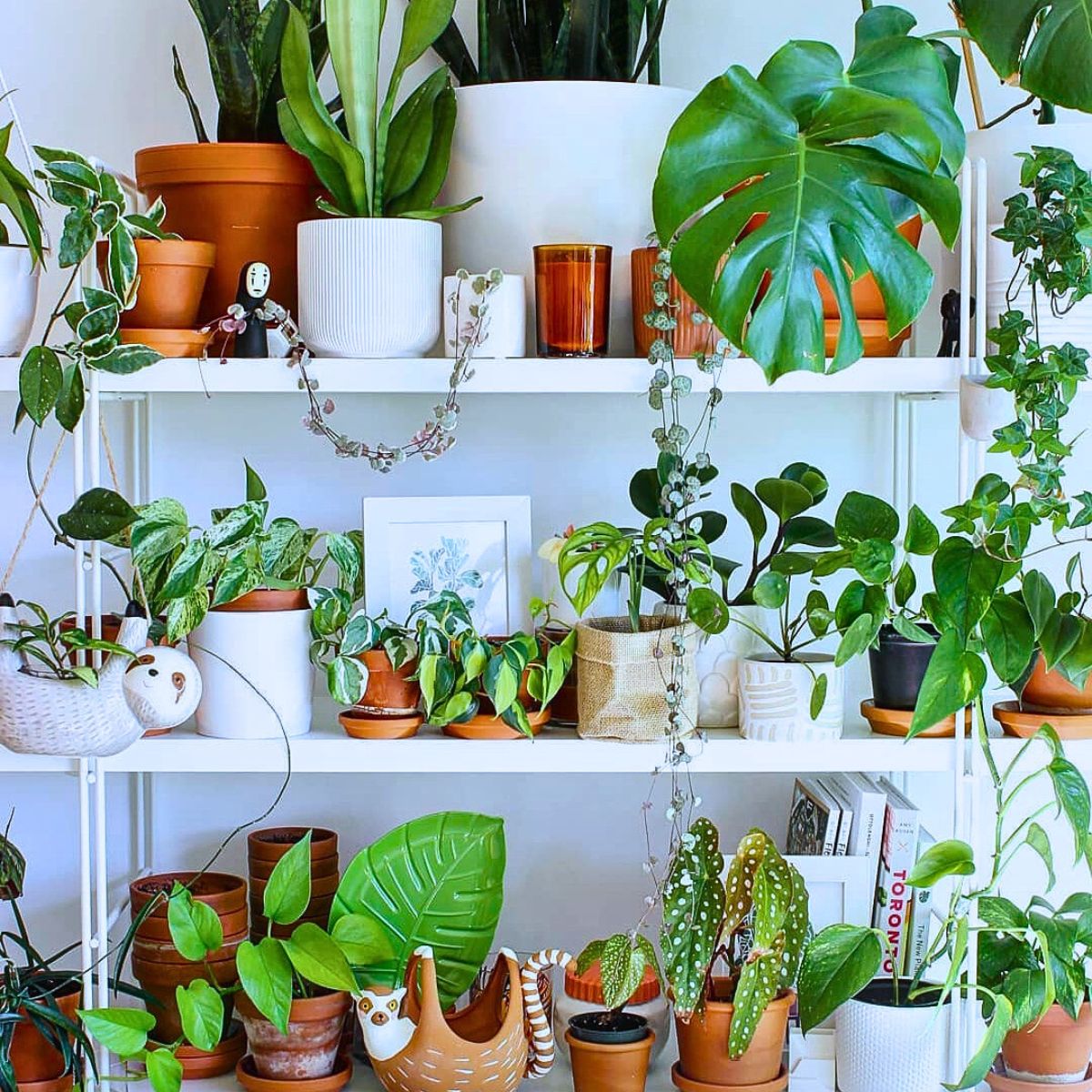
The Power of Wallpapers and Color
Postmodern design embraces bold, bright wallpapers — think geometric patterns, retro shades, nature shapes, and playful motifs — that are remarkable and invite inhabitants to engage with the space. Some dashes of color, especially in seating arrangements, can add energy and vitality to the room. Soft furnishings in pleasant hues, statement furniture pieces, and colorful pots can add that extra postmodern flair.
If you're not daring enough to commit to a bold wallpaper or a bright sofa, accents of color on a neutral backdrop are a subtler way to introduce the postmodern influence. Or, add a large piece of art with eye-catching colors and designs to bring some vibrancy to an existing space.
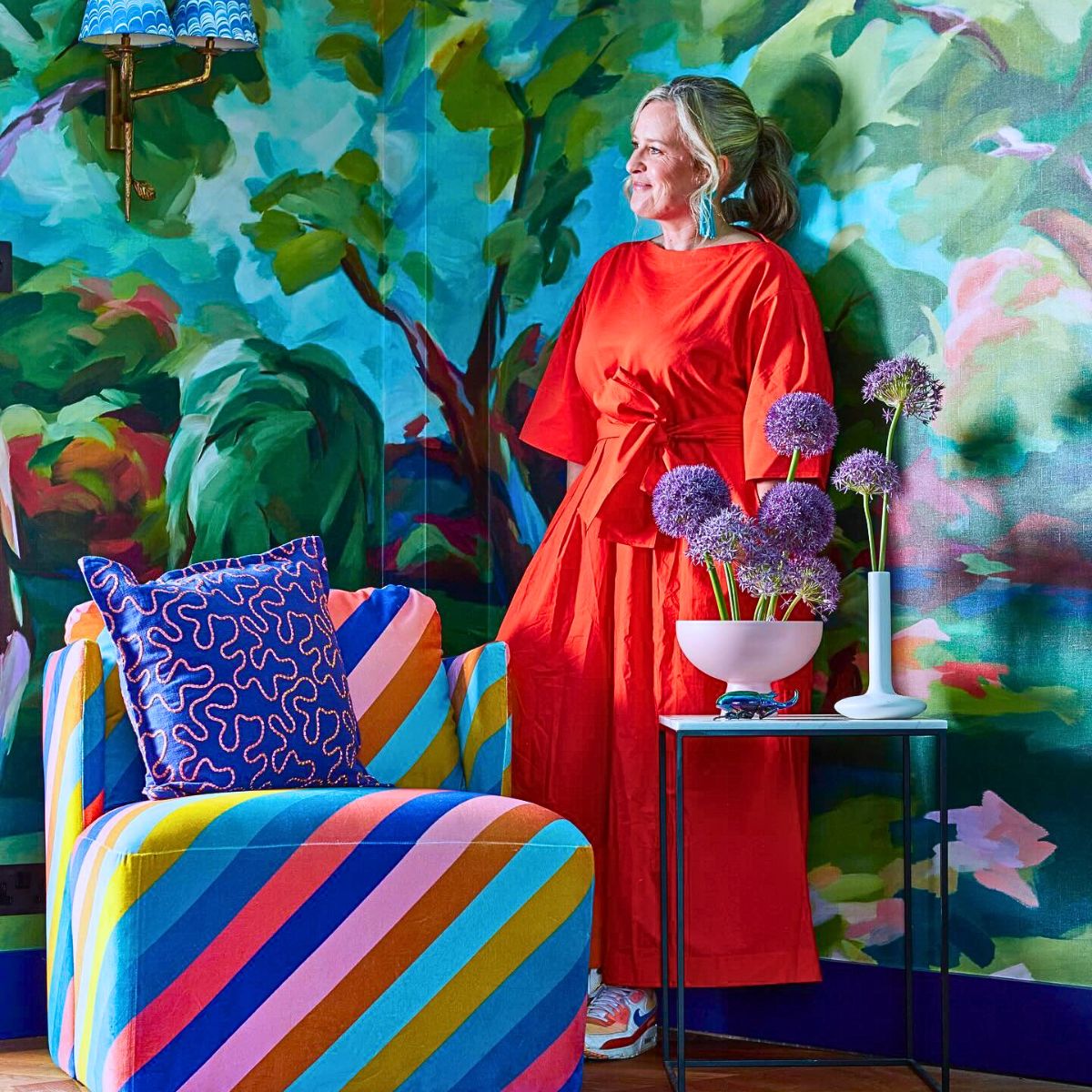
Photo by @hetinterieurdesigninstituut
The Right Vessel for the Job
Just as important as choosing the right plant is, selecting an appropriate vessel — pot, basket, or urn - is ideal. It can add texture, color, and interest to the design. Go for terracotta pots for a rustic charm, colorful vases, and containers for adding color to the scene, weaved baskets for texture, or vintage urns for a sophisticated touch.
Disguise the pots with baskets or place them on trays to avoid water damage to the floors or furniture. And remember, the potting process should also consider the drainage system to ensure the plant's long-term health and sustainability.
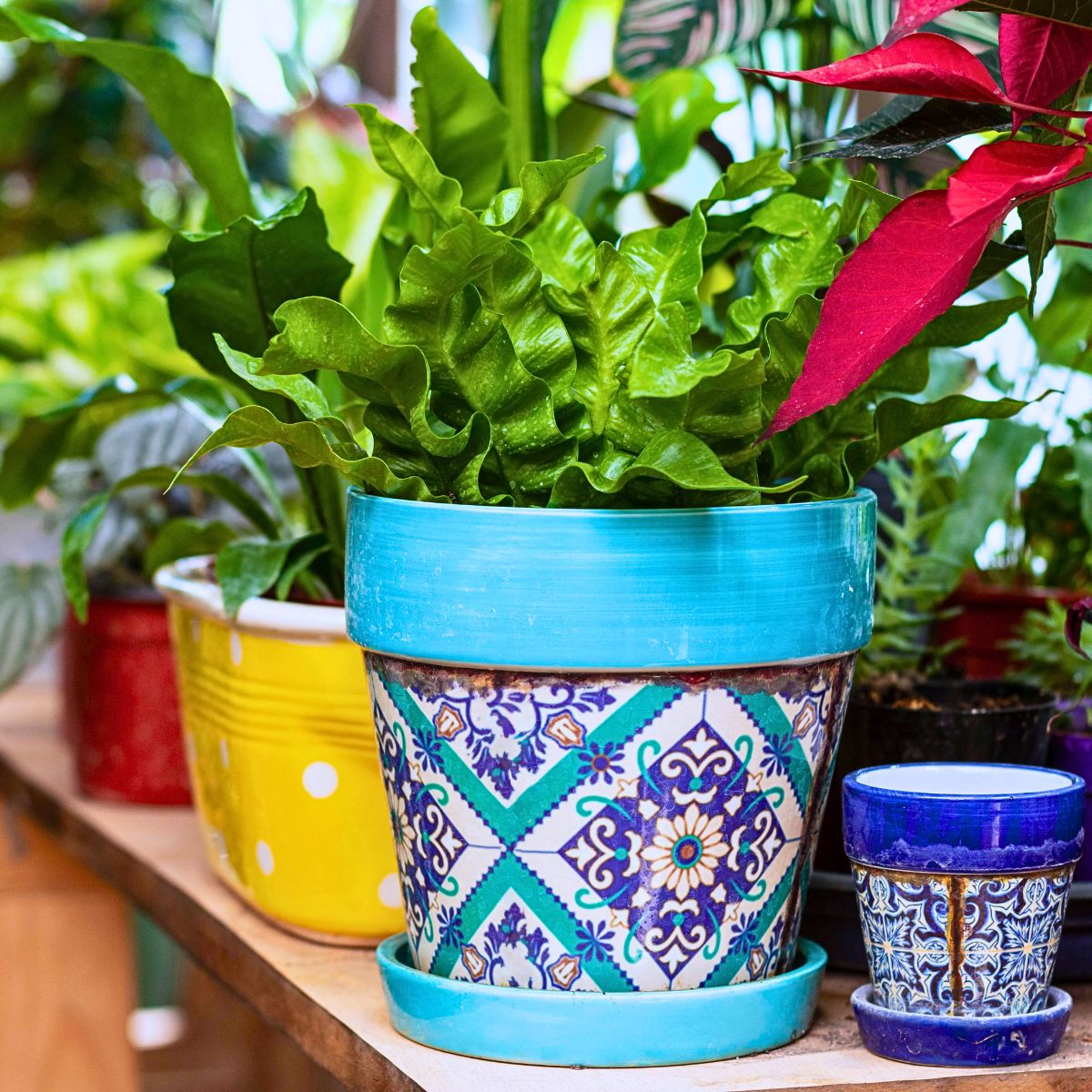
Statement Pieces and Focal Points
Postmodern design is about embracing eccentric statement pieces and creating focal points throughout the room. Large indoor trees, like figs or citrus plants, can become the centerpiece of your design, drawing the eye and adding a dramatic effect.
Place them in a prominent position, such as on either side of a fireplace, to create a balanced yet surprising design element. Group several plants together, creating a cluster on a table or hutch, or think creatively about empty spaces and hang some plants from the ceiling to create an attention-grabbing feature.
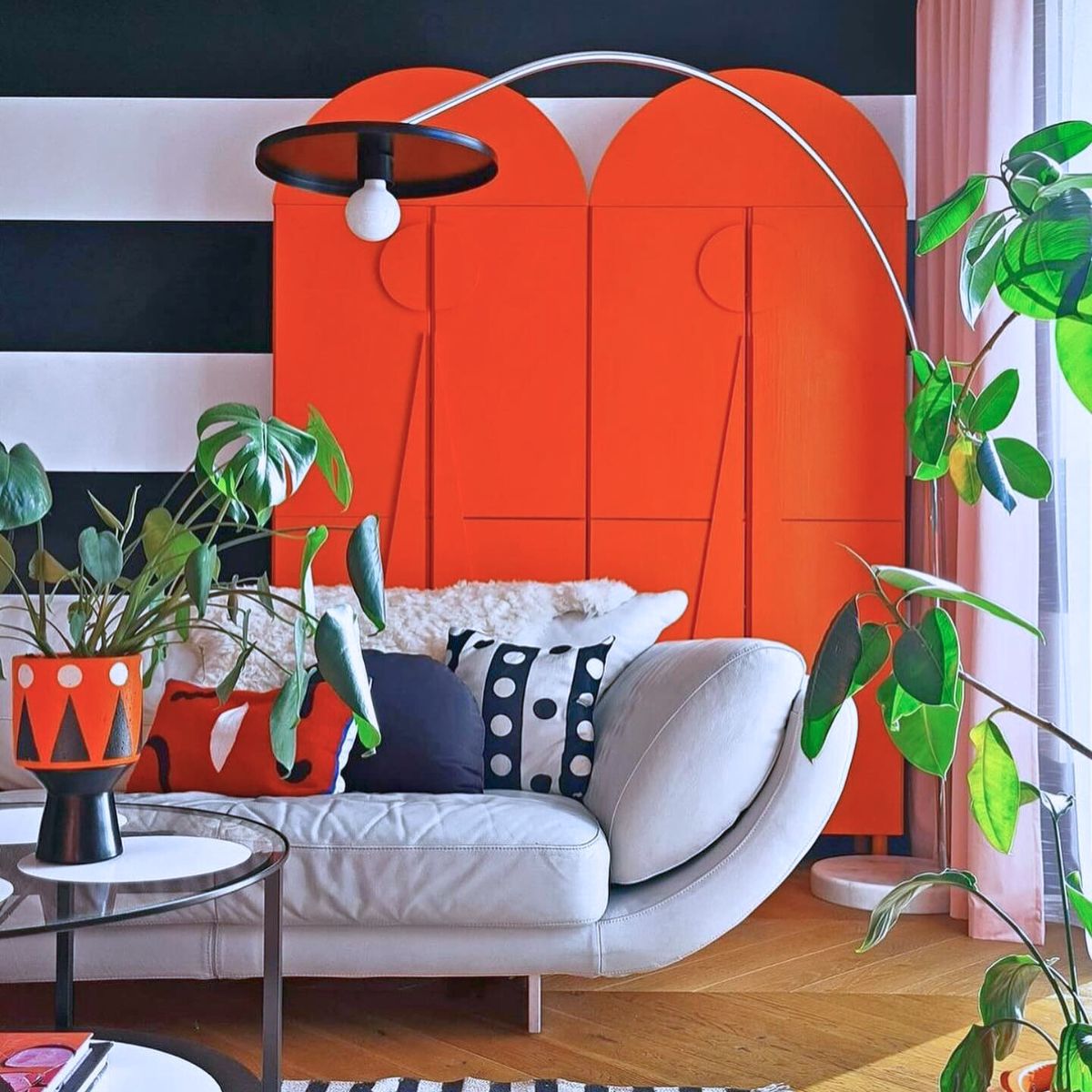
The Bedroom and Bathroom
Plants have a calming effect, which makes them excellent additions to bedrooms and bathrooms. Cluster them around your bed to add a beautiful display, or create a wall of greenery above your bed for a dreamy, outdoorsy vibe. Bathrooms, too, can benefit from some botanical life, especially if you go for humidity-loving plants that thrive in those conditions. Here's how to choose and care for plants in your bathroom.
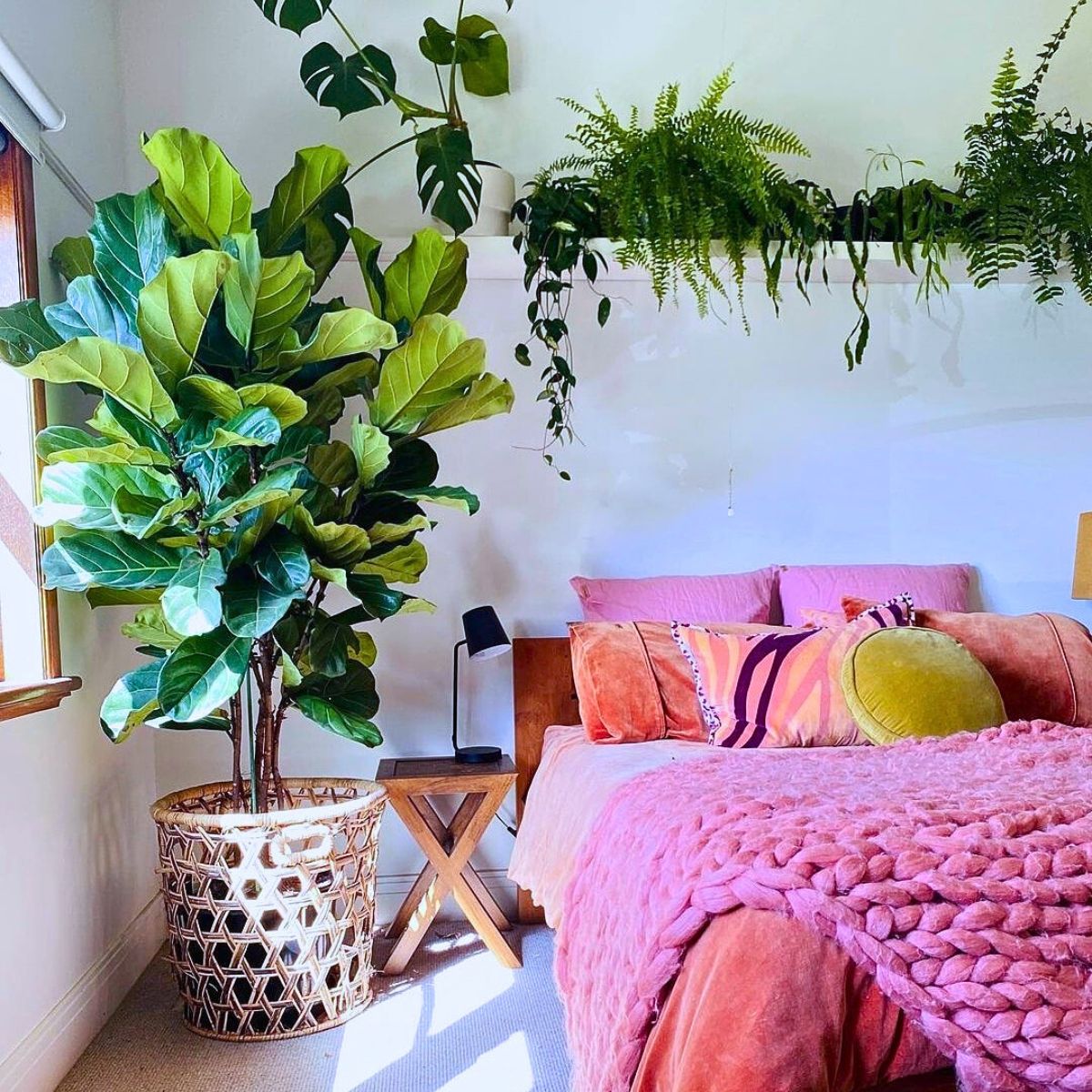
It’s All in the Details
Postmodern design is playful and full of decorative details that exude fun. Dangling vines around a mirror or shaping them to wrap around furniture can be a wonderful touch. Transform a bar cart into a plant stand, or use a pegboard as a partial plant shelf. Let your creativity run wild and embrace the eccentric. Remember, this design style is all about breaking away from the expected.
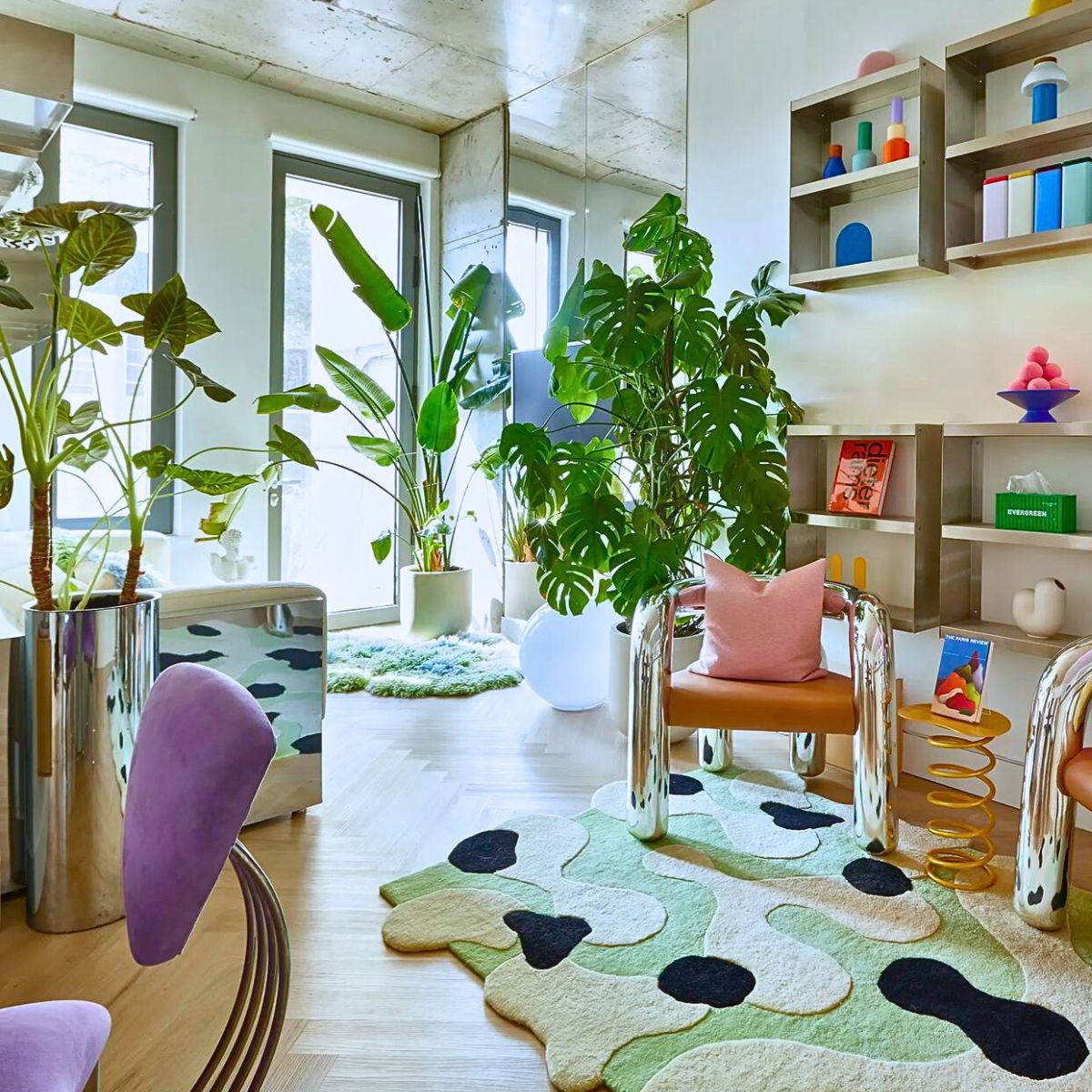
Seasonal Changes
Postmodern design embraces the change of seasons, so be sure to update your plant selections accordingly. Go for potted flowers in spring, like azalea or cyclamen, and opt for a festive plant, such as amaryllis, at Christmas. Fresh branches of cherry blossoms or other blooming varieties placed artfully around the room can also bring a breath of fresh air into the space.
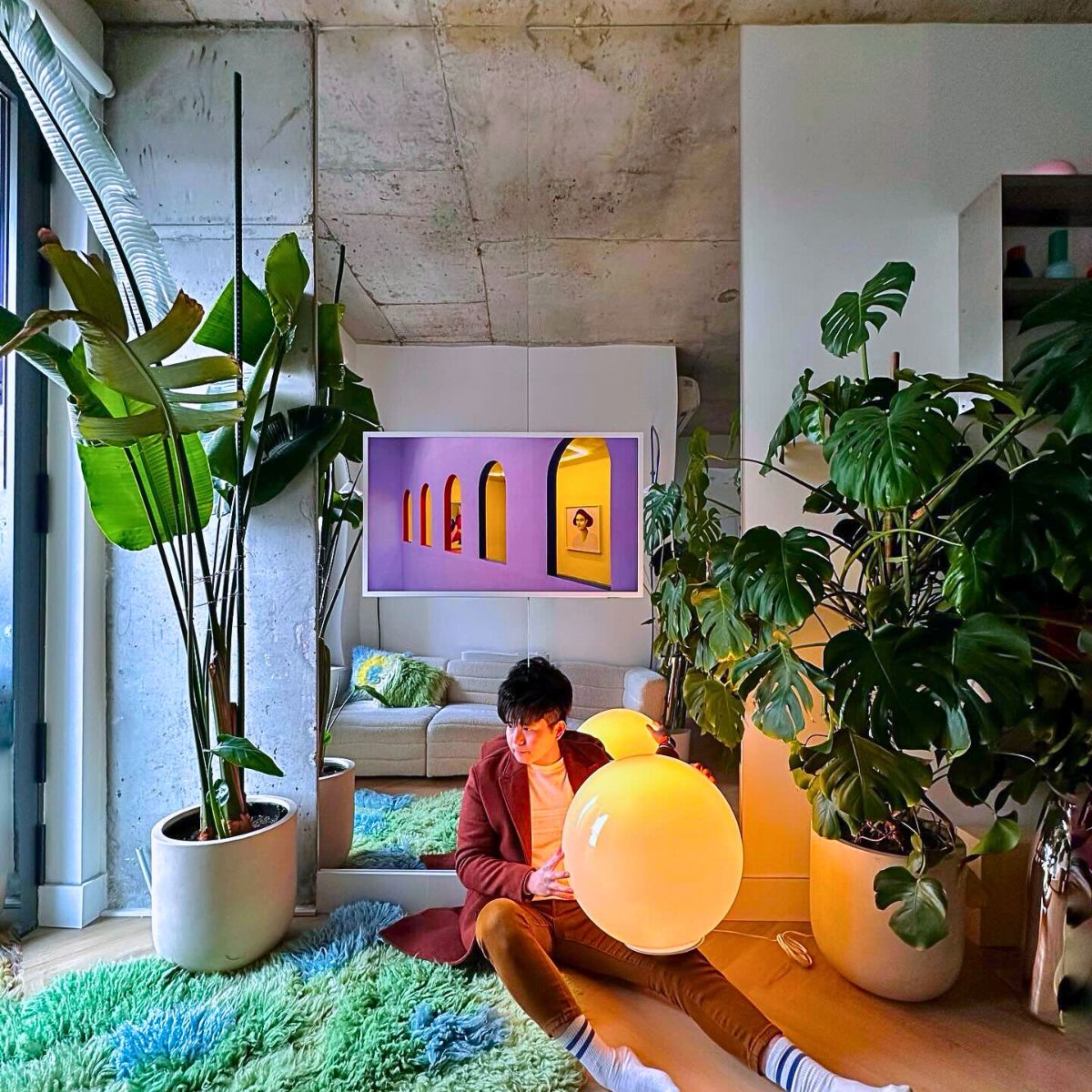
A Final Point to Ponder
When decorating your interiors with houseplants, remember that abundance is key to creating a perfectly immersive botanical theme and feel. Therefore, commit to the cause, and let your nature shine out through this eclectic interior design style.

